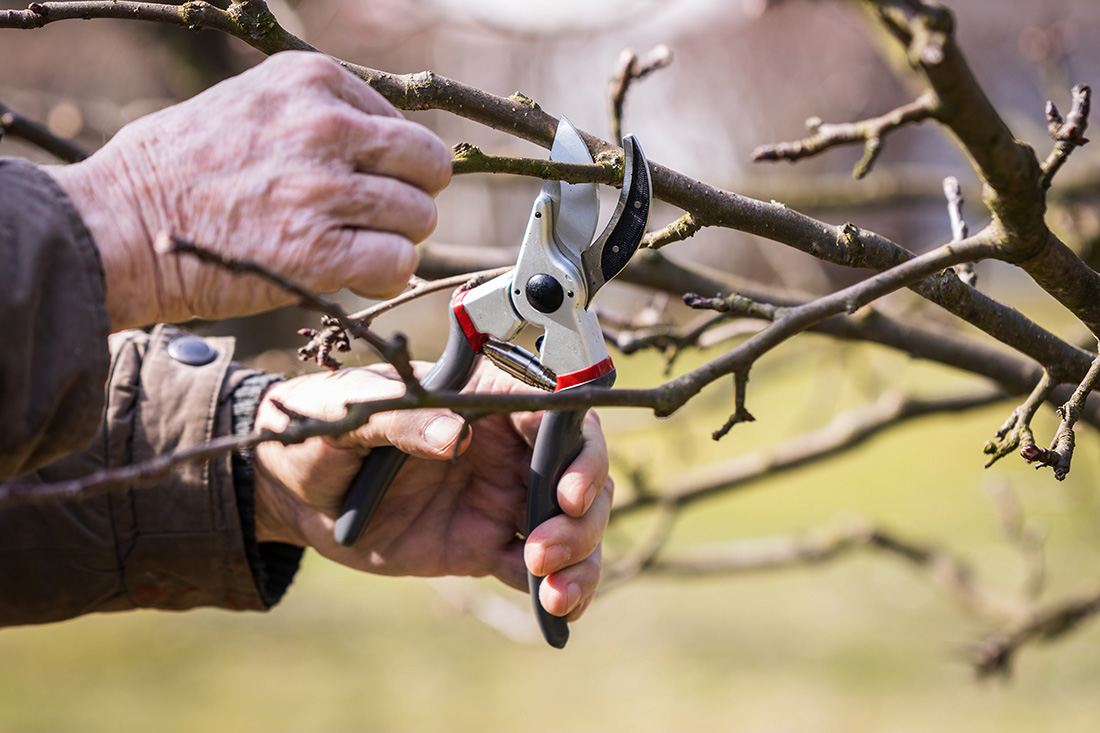![]()

By Dr. Emily Stine, Nebraska Extension Educator Horticulture
Pruning always seems to be a monumental task to take on, but with the right tools and some knowledge about the plant, it becomes easier.
Best pruning practices require proper tools sized to the branches being removed. Branches less than 1-inch diameter or smaller can be removed with hand pruners. If you find yourself making multiple attempts at a branch or twisting the pruners to make the cut, use a larger tool. Loppers are best for branches over 1 inch in diameter and can make getting into some plants (like roses) easier with their long handles. Pruning saws work well for tight places where prunes or loppers may not reach. They are incredibly sharp and should be used on anything over 1.5 inch diameter. Hedge shears are used for shaping and shearing plants and are not an adequate substitution for other pruning tools.
Pruner types come in two forms: anvil and bypass. Anvil pruners have a blade that closes on a flat edge, like a knife against a cutting board. Bypass pruners act like scissors, where the sharp blade passes by the stationary blade.
When it comes to timing our pruning, we don’t always have a choice. With the storms that frequently roll through our region, broken branches need to be removed for safety as soon as possible. However, if we can choose when to prune, here are some different timings for do-it-yourselfers that want to manage some of the smaller branches. Large branches in large trees are best left for professionals that have training and tools to complete the job.
Traditional pruning recommendations typically suggest pruning during the dormant season. Most trees can withstand pruning at almost any time in the year, but there are certain times that are better for maximizing tree health than others.
Deciduous shade trees, or trees that lose their leaves in the winter, are best pruned during late spring and early summer. New research shows plants are better able to seal and heal when actively growing, a process known as Compartmentalization of Decay in Trees – CODIT for short. This replaces previous recommendations to prune shade trees in winter dormancy.
Pruning time for deciduous shrubs depends heavily on flowering time. If the shrub blooms in the spring (before June), wait until after it flowers to make pruning decisions. If the shrub blooms in the summer months, late winter and into early spring is the best time to prune. In both situations, pruning is done before flower buds are set so you can enjoy as many blooms as possible.
Evergreen plants maintain their leaves during the winter and rarely need to be pruned. With a few exceptions, evergreen branches that no longer have leaves on them will not put out new growth. If a pine tree needs to be pruned, the ideal time is mid-summer when new growth is at least halfway grown. Pruning pines too early can lead to deformation, and pruning too late can stunt future growth. Spruce and fir trees can be pruned between November and April. Evergreen shrubs (e.g. arborvitae and juniper) are best pruned between November and April. They will heal quickly when pruned during this timeframe.
When starting to prune, first survey the plant and decide if it needs pruning. Assess for safety – make sure the plant is not blocking vehicle sight lines or covering sidewalks. Low hanging branches over sidewalks should also be removed to prevent injury.
Remove any dead, damaged, or diseased branches, then determine if there are crossing or rubbing branches to prune and remove. If there are any suckers or little saplings at the base of the trunk, remove them. Water sprouts, or small vertical stems on branches should also be pruned. When removing living branches, try to take no more than 1/3 of the total canopy in a single year.
Once you are aware of good pruning practices and have the proper tools to get the job done, pruning turns from a monumental task into a series of simple decisions.
For more information, contact Emily Stine at estine2@unl.edu.
